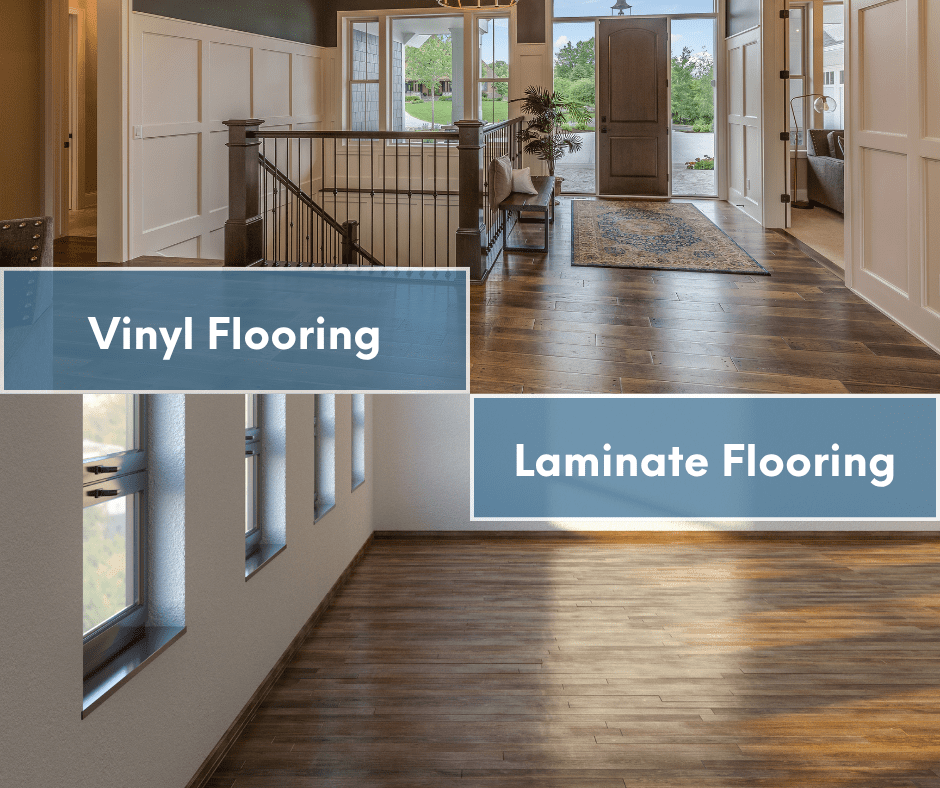Vinyl vs. Laminate Flooring: Which is Right for Your Home?
When it comes to choosing new flooring, two of the most popular budget-friendly options are vinyl and laminate. At first glance, they look similar — both can mimic the appearance of hardwood at a fraction of the cost. But when you dig deeper, there are some important differences that can affect your comfort, budget, and long-term satisfaction.
Here’s a side-by-side comparison to help you decide:

🔍 What’s the Difference Between Vinyl and Laminate?
Vinyl Flooring
Material: Made of synthetic materials (PVC), available in sheets, tiles, or luxury vinyl planks (LVP).
Look & Feel: Can closely mimic wood, stone, or tile. Waterproof versions are ideal for kitchens, bathrooms, and basements.
Installation: Often peel-and-stick, click-lock, or glue-down. DIY-friendly.
Laminate Flooring
Material: Made of compressed fiberboard with a photographic layer and protective top coating.
Look & Feel: Realistic wood-like visuals and texture; feels more like hardwood underfoot than vinyl.
Installation: Typically click-lock floating floor systems, also DIY-friendly.

✅ Pros and ⛔️ Cons at a Glance
✅ Vinyl Flooring Pros:
Waterproof
Durable & low maintenance
Wide style options
Good for high-moisture areas
✅ Laminate Flooring Pros:
Realistic wood appearance & texture
Affordable alternative to hardwood
Easy installation
⛔️ Vinyl Flooring Cons:
Doesn’t boost resale value as much as hardwood/laminate
Can fade in direct sunlight
⛔️ Laminate Flooring Cons:
Not waterproof
Can chip or scratch
May need replacement sooner in high-traffic areas


🏆 Which One Should You Choose?
Choose Vinyl if: You need waterproof, durable flooring for kitchens, bathrooms, basements, or homes with kids and pets.
Choose Laminate if: You want the most realistic hardwood look, are prioritizing style, and don’t need waterproofing.
🏡 Final Thoughts
Both vinyl and laminate are budget-friendly ways to get the look of hardwood without the high cost. The right choice depends on your lifestyle, where you’re installing it, and how long you plan to stay in the home.
Still not sure? Reach out to The Heffron Group REALTORS — we can connect you with trusted local contractors and help you choose the right upgrades for your home’s value and comfort.


